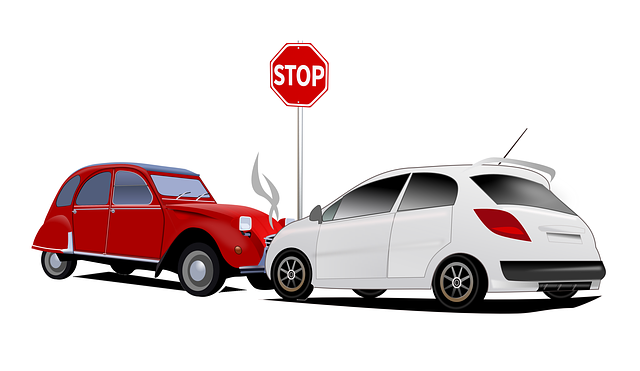Full coverage car insurance offers comprehensive protection, including collision, comprehensive, and medical payments coverage, shielding drivers from diverse financial burdens related to vehicle usage, such as accidents, theft, natural disasters, and medical injuries. It's essential for younger drivers, owners of high-value vehicles, and anyone seeking peace of mind, ensuring adequate protection while driving and avoiding unexpected financial shocks. Understanding costs and shopping around for quotes are critical steps in securing affordable full coverage that meets specific needs.
Looking for comprehensive car insurance coverage? Understanding ‘full coverage’ is key to making informed decisions. This guide breaks down everything you need to know, from defining full coverage and its benefits, to identifying who needs it and navigating claims. We’ll explore common scenarios, debunk myths, and help you understand the costs. By the end, you’ll be equipped to choose the best car insurance for your peace of mind on the road.
Understanding Full Coverage Car Insurance: A Comprehensive Overview

Full coverage car insurance is a term that encompasses various types of automotive insurance designed to protect drivers from financial loss in the event of an accident or other unforeseen circumstances. Unlike basic liability insurance, which covers only the policyholder and third parties involved in an incident, full coverage includes additional protections such as collision, comprehensive, and sometimes even medical payments.
Collision insurance pays for repairs or replacement of your vehicle if it’s damaged in a crash, while comprehensive insurance covers losses from events like theft, vandalism, or natural disasters. Medical payments can help offset the costs of medical treatment for injuries sustained by you or your passengers. Understanding these components is crucial when navigating car insurance options to ensure you’re adequately protected on the road.
What Does Full Coverage Really Mean?

Full coverage car insurance is a comprehensive protection plan that goes beyond the standard requirements. It’s designed to shield you from a wide range of financial burdens related to vehicle ownership. This type of insurance typically includes liability coverage, which protects you against claims arising from accidents where you’re at fault, and also covers damages to other people’s property or injuries they sustain.
But full coverage isn’t just about liability. It often includes collision coverage, which pays for repairs or replacement if your car is damaged in an accident, regardless of who’s at fault. Additionally, it may comprise comprehensive coverage, designed to cover damages from events beyond your control like theft, vandalism, or natural disasters. In essence, full coverage car insurance aims to protect you from unexpected financial blows associated with vehicle ownership and operation.
Benefits of Opting for Full Coverage

Opting for full coverage car insurance offers several significant advantages that can protect both your vehicle and your financial well-being. Firstly, it provides comprehensive protection against a wide range of potential risks, from accidents to natural disasters and theft. This means if your car is damaged or totaled in an event not covered by basic liability insurance, such as a hit-and-run incident or severe weather conditions, full coverage kicks in to help with repairs or replacement costs.
Additionally, full coverage car insurance often includes perks like rental car reimbursement during the period of repair, and protection against liabilities if you’re found at fault in an accident. This comprehensive approach ensures that you’re not left with a substantial financial burden when unexpected events occur. By investing in full coverage, drivers can have peace of mind knowing their investment in their vehicle is safeguarded, offering greater security on the road.
Who Needs Full Coverage Car Insurance?

Everyone who owns a car should consider full coverage car insurance, but certain groups are more in need of it than others. High-risk drivers, for instance, those with multiple tickets or accidents on their record, require comprehensive protection to mitigate potential financial disasters. Similarly, young drivers, particularly those under 25, often fall into higher risk categories due to lack of driving experience and statistically higher accident rates; full coverage insurance can help protect them from hefty out-of-pocket expenses.
Valuable vehicles, regardless of the owner’s driving history, are another category that benefits from full car insurance. Expensive cars, classic models, or those with specialized features need comprehensive protection to cover potential losses due to theft, vandalism, natural disasters, or accidents. In essence, full coverage car insurance is not just for those who drive recklessly; it’s a crucial safety net for any driver and their vehicle investment.
Uncovering the Costs: Full Coverage Premiums

Understanding the cost of full coverage car insurance is a crucial step in making an informed decision about your vehicle protection. Unlike liability-only policies, which focus on protecting you against other drivers’ damages, full coverage encompasses a broader range of scenarios. This includes collision coverage, comprehensive insurance, and often, medical payments or personal injury protection (PIP). Each of these components contributes to the overall premium cost. Collision coverage accounts for repairs or replacements due to accidents, while comprehensive insurance protects against non-collision incidents like theft, vandalism, or natural disasters.
When comparing car insurance quotes, it’s essential to consider that full coverage premiums can vary widely based on several factors. These include your driving history, the make and model of your vehicle, your location, and the level of coverage you choose. Insurers use these variables to assess risk, which directly influences the pricing. Therefore, shopping around for quotes becomes vital to finding the best balance between comprehensive protection and affordable premiums tailored to your specific needs.
Common Scenarios Requiring Full Coverage

In the realm of car insurance, full coverage is a safety net that protects against unforeseen circumstances. Common scenarios requiring full coverage include accidents involving significant damage to your vehicle, where repairs may surpass the car’s pre-accident value. This is especially true for younger drivers or those with high-value vehicles, as their cars might be considered total losses due to repair costs. Additionally, comprehensive insurance is crucial when dealing with theft or vandalism, ensuring that you’re not left financially burdened by these incidents.
Full coverage also becomes essential during inclement weather conditions, such as floods or severe storms, where damage from water or debris can render a vehicle unusable. Moreover, if you drive in areas prone to natural disasters like earthquakes or hurricanes, full car insurance provides peace of mind and financial protection for your vehicle’s potential losses. These scenarios underscore the value of having comprehensive coverage to safeguard against unexpected events that could leave significant marks on your vehicle.
Myths Debunked: Separating Fact from Fiction

Many misconceptions surround full coverage car insurance, leading many drivers to believe myths that could cost them dearly. It’s essential to understand what truly constitutes full coverage and how it protects you on the road. One common myth is that full coverage is expensive and unnecessary. While it may involve a slightly higher premium, it’s a misconception that it’s unaffordable for all budgets. Full coverage car insurance combines several types of protection into one policy, including liability, collision, comprehensive, and sometimes medical payments. This comprehensive approach ensures you’re protected from various financial burdens resulting from accidents or other unforeseen events.
Another myth is that full coverage isn’t worth the hassle because modern cars are more expensive to repair than ever before. However, this perspective fails to consider the broader picture. Full coverage protects not just your vehicle but also includes liability coverage, which can shield you from significant personal financial risks in case of an accident causing damage to others’ property or injuries. Additionally, comprehensive and collision coverages step in when natural disasters or incidents like theft strike, ensuring you’re not left with a pile of repair bills.
Navigating Claims: What to Expect with Full Coverage

Navigating claims with full coverage car insurance offers a sense of security and protection that’s reassuring for drivers. When an accident occurs, it’s important to remember that your insurer is there to help. The first step is typically reporting the incident to your insurance company as soon as possible. You can do this over the phone or online, providing details about the other driver, the circumstances of the accident, and any damage to your vehicle.
After reporting the claim, you’ll be guided through the process. This may include filing a police report, gathering evidence like photos or witness statements, and arranging for repairs at a trusted repair shop. Your insurance company will assess the damage and determine the cost of repairs or replacement, up to the limits of your policy. Full coverage car insurance typically covers not only the cost of repairing or replacing your vehicle but also offers additional protections such as liability coverage for damages you may cause to others’ vehicles or properties.
